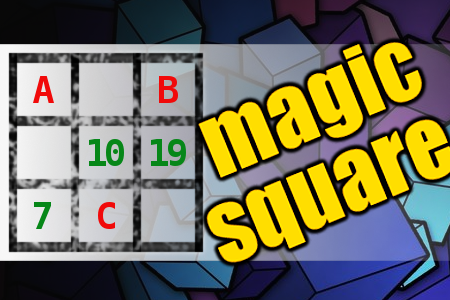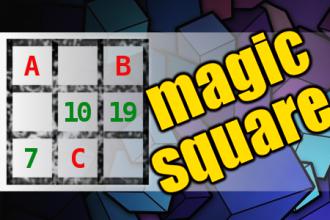MAGIC SQUARE: Calculate A*B+C
The aim is to place the some numbers from the list (6, 7, 9, 10, 11, 12, 19, 22, 24, 60) into the empty squares and squares marked with A, B an C. Sum of each row and column should be equal. All the numbers of the magic square must be different. Find values for A, B, and C. Solution is A*B+C.Correct answers: 0
#brainteasers #math #magicsquare

A Prisoner's Last Request
Two men, sentenced to die on the same day, were led down to the room where the electric chair was. The priest had given them last rites, the formal speech had been given by the warden, and a final prayer had been said among the participants. The warden, turning to the first man, solemnly asked, "Son, do you have a last request?"The man replied, "Yes sir, I do. I love dance music. Could you please play the Macarena for me one last time?" "Certainly," replied the warden.He turned to the other man and asked, "Well, what about you, son? What is your final request?" "Please," said the condemned man, "Kill me first."

